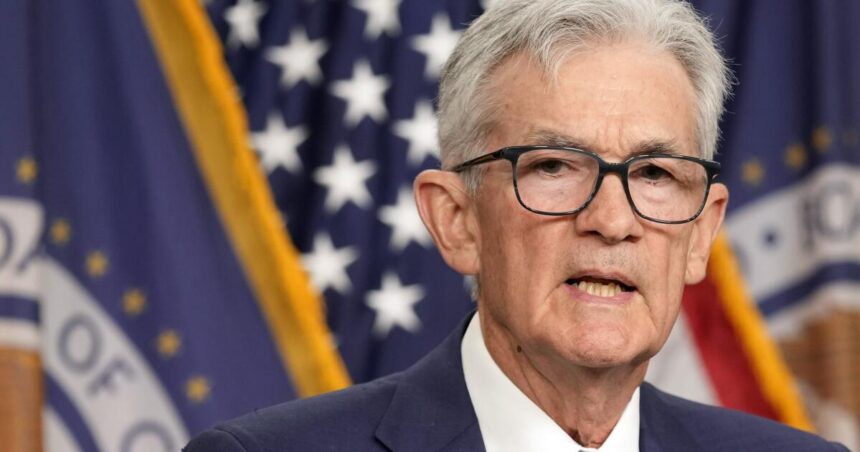American consumers, homebuyers, businesspeople and political leaders have been waiting for months to hear what the Federal Reserve is set to announce this week: cutting its key interest rate from a 20-year peak.
This is likely just the first in a series of rate cuts to make borrowing easier now that the Fed believes high inflation is largely over.
Consider Kelly Mardis, owner of Marcel Painting in Tempe, Arizona. About a quarter of Mardis’ business comes from real estate agents preparing to sell their homes or from new homebuyers. She recalls that customer inquiries dropped off rapidly almost as soon as the Fed began raising interest rates in March 2022, then continued raising rates through July 2023.
Mardis had to lay off about half of his 30 employees as the housing market contracted, during what he said was the worst drought he’d seen in 14 years.
Mardis envisions brighter times after the Fed begins cutting interest rates on Wednesday. Typically, Fed rate cuts translate into lower borrowing costs for mortgages, auto loans, credit cards, business loans and more.
“I’m 100% sure it will make a difference,” Mardis said. “I’m excited about it.”
At the same time, there is still a lot of uncertainty surrounding this week’s Fed meeting.
How far will policymakers decide to cut the benchmark rate, currently at 5.3 percent: the conventional quarter-point or an unusually large half-point?
Will they intend to continue credit easing at their subsequent meetings in November and December, and into 2025? Will they bring down borrowing costs in time to support an economy that is still growing at a solid pace but is clearly showing cracks?
Fed Chairman Jerome H. Powell, speaking last month in Jackson Hole, Wyoming, stressed that the Fed was prepared to cut interest rates to support the job market and achieve the notoriously difficult “soft landing” — when the central bank succeeds in taming inflation without tipping the economy into recession or allowing unemployment to soar.
It’s not entirely clear whether the Fed can follow through on that.
One silver lining is that with Powell and other Fed officials signaling that a rate cut is coming, many interest rates are already falling in anticipation. The average rate on a 30-year mortgage fell to 6.2% last week, the lowest in about 18 months, down from a peak of nearly 7.8%, according to mortgage lender Freddie Mac. Other rates, such as the yield on the five-year Treasury note, which influences auto-loan rates, have also fallen.
“This will really help bring down borrowing costs across the board,” said Cathy Bojancic, chief economist at Nationwide Financial Inc. “This will help provide greater relief to consumers.”
Companies will be able to borrow at lower interest rates than they have in the past year or so, which could lead to increased investment spending.
“The question is, are they contributing fast enough to actually get that soft landing that everyone’s hoping for?” said Gennady Goldberg, head of U.S. rates strategy at TD Securities.
Many economists want the Fed to announce a half-point cut this week, in part because they believe it should have started doing so when it last met in July. Futures prices signaled that Wall Street traders on Friday expect the Fed to deliver at least two half-point rate cuts by the end of the year.
Still, Goldberg suggested there was a downside to cutting interest rates by a half-point this week: It could signal to markets that Fed policymakers are more worried about the economy than they actually are.
“The market may think that something is wrong and that the Fed sees something very scary on the horizon,” Goldberg said.
It could also raise expectations of another half-point rate cut from the Fed that may never materialize.
In the longer term, what matters more than the Fed’s action on Wednesday is the pace of rate cuts over the next year and where they ultimately end up. If Fed officials conclude that inflation has essentially been defeated and there is no longer any need to slow the economy, they could suggest that the key interest rate should be set at a more “neutral” setting, possibly as low as 3%. That would require a series of further rate cuts.
Many economists believe the economy needs even lower interest rates. Diane Swonk, chief economist at KPMG, notes that employment has averaged just 116,000 jobs per month over the past three months, comparable to the slow job growth during the Great Recession of 2008-2009. The unemployment rate rose almost a percentage point to 4.2%.
“When hiring isn’t happening at a very rapid pace, there’s a vulnerability there,” Swonk said. “The labor market continues to be much weaker than we thought it would be.”
Still, a Fed rate cut could provide a crucial boost to the economy at a time when it is needed.
Michele Ranelli, head of U.S. research at credit monitoring firm TransUnion, said falling interest rates generally encourage consumers to refinance their high-interest debt — mostly credit card debt — into lower-cost personal loans, which will ease their financial burden.
And with mortgage rates below 6%, more homeowners are likely to be willing to sell rather than hold on to their homes because they’re reluctant to trade their low mortgage rates for much higher ones, Ranelli said. More home sales could help ease the supply shortage that’s making it difficult for young people to buy their first homes.
“This is going to start breaking this logjam we’ve been in with low housing inventory,” Ranelli said. “It’s going to take some people starting to move to create that disruption.”
Other small businesses are seeing signs of rising turnover. Brittany Hart, who runs a Phoenix software consulting firm that works with mortgage brokers, wealth managers and banks, has noticed increased interest from potential clients in implementing new software to improve efficiency as they expect the housing market to recover.
Hart has begun looking for three new employees to help handle the expected business, in addition to the roughly 20 he currently has.
“This is the first leading indicator that the housing market is returning to normal activity,” he said.
Rugaber is a contributor to The Associated Press.









